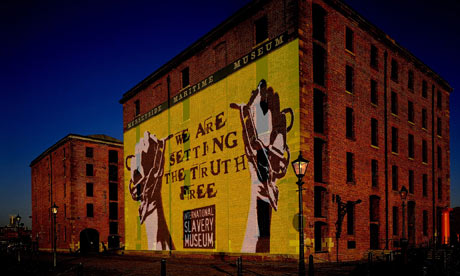Source: The Guardian
This week sees the international day for the remembrance of the slave trade and the Guardian Teacher Network has resources to make children aware of contemporary slavery
The International Slavery Museum, Liverpool, which has created a teachers' resource pack giving information about contemporary forms of slavery
More than 200 years after the abolition of the transatlantic slave trade, forms of slavery such as child labour remain prevalent around the world. To coincide with the international day for the remembrance of the slave trade on 23 August, the Guardian Teacher Network (teachers.guardian.co.uk) brings you a range of resources on slavery.
The British Library has developed a teaching pack for secondary schools that explores the principles behind the campaign to abolish the slave trade and the ways in which it was successful. The resource includes information about the history of the slave trade, historical sources from the campaign to abolish slavery, and activities that explore aspects of campaigning.
Slavery today is a resource from Amnesty that aims to raise awareness of modern forms of slavery, with a particular focus on trafficking. Suitable for use with 14- to 16-year-olds, students consider how traffickers use deception or coercion to take people away from their homes, and how victims are forced into situations of exploitation. The resource includes case studies of people affected by slavery and useful definitions of modern forms of slavery.
For upper primary and lower secondary pupils, the International Slavery Museum in Liverpool has created a contemporary slavery teachers' resource. The pack, produced in partnership with the Wilberforce Institute for the study of Slavery and Emancipation (WISE) and Unesco, includes information on contemporary forms of slavery and initiatives to outlaw and combat them, a set of lesson plans and supporting materials for use with 10- to 14-year-olds, and a glossary of key concepts to help students understand, think about and discuss contemporary slavery.
Ending Slavery: An Unfinished Business is a booklet created by theCitizenship Foundation and Church Mission Society that aims to inspire young people to take a stand against the continuation of slavery. The booklet includes information sheets on William Wilberforce and Olaudah Equiano, key players in the campaign to abolish the slave trade, along with ideas to develop students' understanding of pressure groups and the methods they use to influence decision makers.
Anti-Slavery International has produced an extensive range of teachingmaterials for both primary and secondary pupils. Child Slavery is an assembly for upper primary that focuses on the rights of the child in relation to child labour. For secondary pupils, the Universal Declaration of Human Rights is explored in the assembly Human Rights and Slavery. Other materials include: a slavery and human rights lesson plan, case studies and photographs about forced and bonded labour, and a quiz.
On the broader themes of justice and fairness, the Red Cross has produced a series of resources including Conflict lines, a lesson that focuses on international humanitarian law.
Join the Guardian Teacher Network community for free access to teaching resources and an opportunity to share your own. There are also thousands of teaching, leadership and support jobs on the site; visitGuardian jobs for schools.



No comments:
Post a Comment